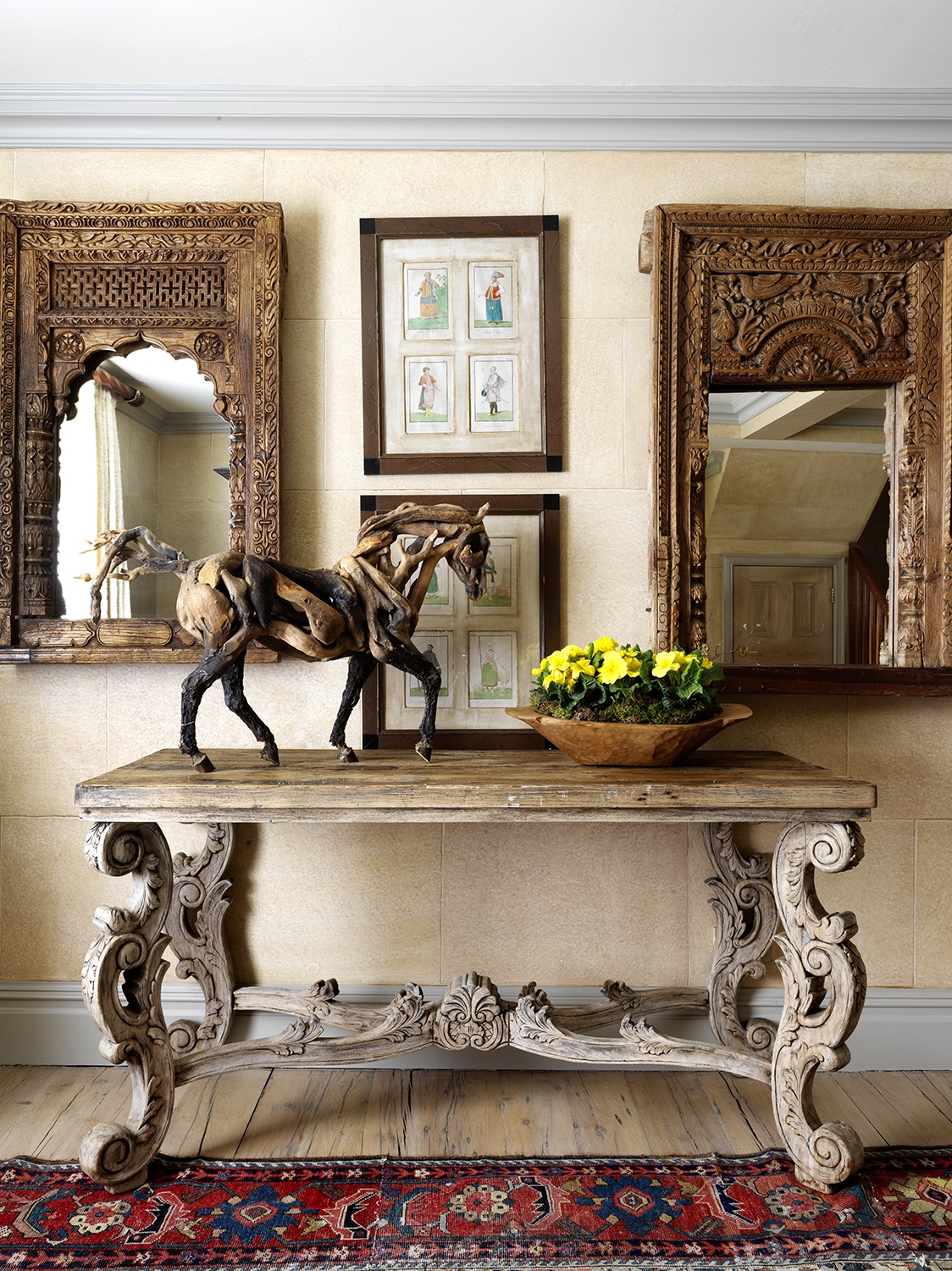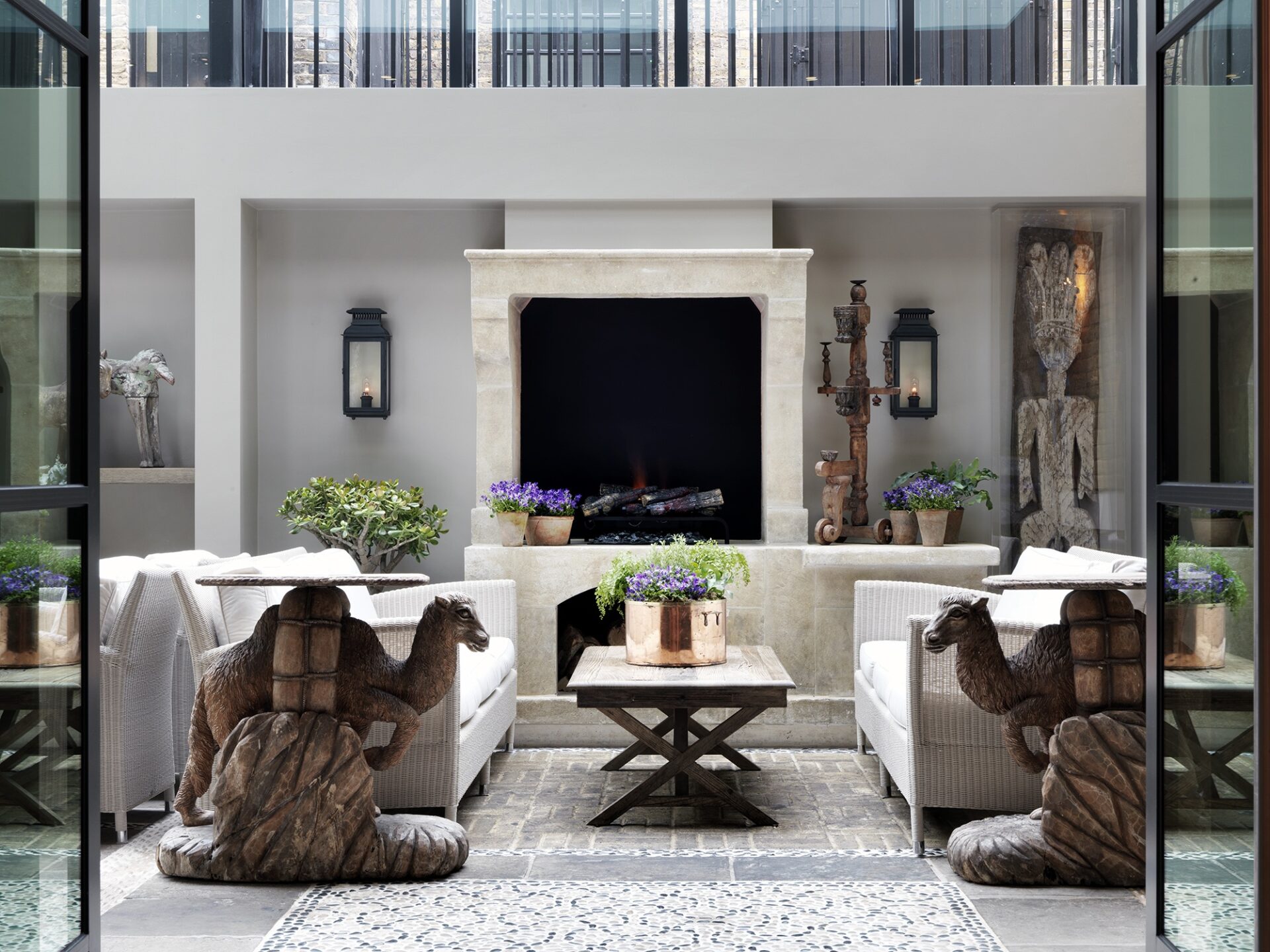
Wood Carving
Day to DayThe impressiveness of detailed wood carving is amplified by wood's tendency to crack, be damaged by insects, or affected by atmospheric changes. The fact that these ancient and beautiful pieces are still intact today is to our advantage and throughout our hotels we have often used wood carved pieces to inject character and texture into a room. Explore the history of wood carving and how we use it around our hotels...
Wood carving is one of the oldest crafts. It dates back to as early as the Palaeolithic period where wooden spears used for defence were made from carving blocks of wood. Over time this craft evolved to become more impressive with figures and intricate details. The Gothic period (12th – 15th centuries) is a key example of this. Wood carving was in abundance and outstanding examples of altarpiece art and other religious works were created with amazing mechanical accuracy. This is St Wolfgang’s church altarpiece in Austria and is an exquisite example of a deep sculptural rendering made from lindenwood by Michael Pacher.
The impressiveness of detailed wood carving is amplified by wood’s tendency to crack, be damaged by insects, or affected by atmospheric changes. The fact that these ancient and beautiful pieces are still intact today is to our advantage and throughout our hotels we have often used wood carved pieces to inject character and texture into a room.
At this residential project, Indian mirrors have been carved using traditional techniques. The details reflect the many different tools that would have been used to create this piece. The multiple cinquefoil arch displayed on the left is a classic Indian shaped feature used for decorative purposes. The mirror’s intricate details stand out against the soft neutral tones of the wall and this composition of different woods create a warm and cosy environment.
In this bedroom at Haymarket Hotel, the same whitewashing effect was applied to this mirror. This brings together a variety of decorative elements including the chair’s beading and its neutral tone breaks apart the mustard yellow of the walls.
In the Conservatory at Haymarket Hotel tall wooden lamps with relief-carved botanical details have been placed on each side of a sofa. The white washed finish on the carving highlights the lamp’s smaller details and intricacies whilst replicating the similar botanical forms seen in the wallpaper.
Wood carved creatures can also be found at our hotels. At Covent Garden Hotel, lions carved into lamps show such a characterful expression on their faces whilst the wood’s polished shine gives an impression of a lustrous mane and a sense of importance to the mighty beast.
These antique chairs feature the sinuous shape of a swan’s head and this adds a touch of elegance.
In the Orangery at Ham Yard Hotel, you will spot an abundance of friendly wood carved faces bringing a relaxed and whimsical element to the space. These camels have engraved details to give an impression of fluffy fur.
In India wood carving techniques developed with fabrics and printing designs too. Artisans start by drawing their design on paper before this is replicated by carving the design into a wooden block made from Indian teak or Sheesham wood. This block is then soaked in mustard oil for a week to prevent it from cracking in hot and dry climates. The block has a wooden handle and three holes are drilled into it to allow a flow of air and to allow for the release of excess printing ink. These blocks are dipped into dyes and pressed onto base cloths to create beautiful fabric designs. You will find this antique wooden printing block in our Drawing Room at Ham Yard Hotel.
In a bedroom at The Soho Hotel we have used a traditional wood block printed fabric for these armchairs.
Thank you for exploring wood carving with us and we hope you’ll bring beautifully carved wooden elements into your own interior schemes. For more carving inspiration find our ‘Meet The Maker’ blog post with Henry Neville Wood.










